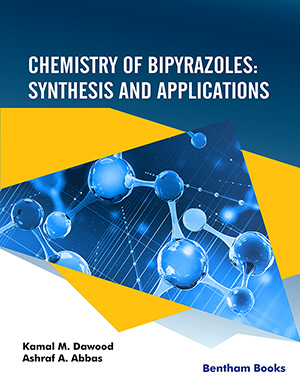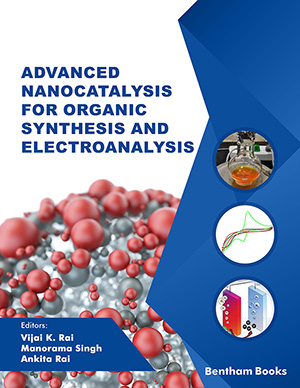
Abstract
Abundant availability of biomass is a greener and bio-renewable resource to govern the bio-based economy by synthesizing energy-rich chemicals. Amongst twelve speciality chemicals, 5-hydroxymethylfurfural (5- HMF) is a potential building block component to synthesize a variety of industrially important organic moieties. In recent times, considerable attention and many efforts have been made by various researchers to produce 5-HMF from lingo-cellulosic biomass. However, efficient production of 5-HMF suffers from various difficulties due to the need of specific solvent and catalytic system. For this purpose, the use of ionic liquid (ILs) has received a special attention. This is because of its enormous potential to work as a “designer solvent” and “catalyst”. This review article mainly focusses on the current research involving the use of ILs as a solvent and catalyst for production of 5- HMF. Various functions of ILs and reaction parameters are discussed in detail with the literature to understand the exact role of IL. Furthermore, an outline of challenges and opportunities related to the use of ILs for 5-HMF production is presented.
Keywords: Ionic liquids, 5-hydroxymethylfurfural (5-HMF), green synthesis, lignocellulosic biomass conversion.
Current Organic Chemistry
Title:Recent Trends of Ionic Liquids for the Synthesis of 5-hydroxymethylfurfural
Volume: 20 Issue: 7
Author(s): Kishor V. Wagh, Kirtikumar C. Badgujar, Nilesh M. Patil and Bhalchandra M. Bhanage
Affiliation:
Keywords: Ionic liquids, 5-hydroxymethylfurfural (5-HMF), green synthesis, lignocellulosic biomass conversion.
Abstract: Abundant availability of biomass is a greener and bio-renewable resource to govern the bio-based economy by synthesizing energy-rich chemicals. Amongst twelve speciality chemicals, 5-hydroxymethylfurfural (5- HMF) is a potential building block component to synthesize a variety of industrially important organic moieties. In recent times, considerable attention and many efforts have been made by various researchers to produce 5-HMF from lingo-cellulosic biomass. However, efficient production of 5-HMF suffers from various difficulties due to the need of specific solvent and catalytic system. For this purpose, the use of ionic liquid (ILs) has received a special attention. This is because of its enormous potential to work as a “designer solvent” and “catalyst”. This review article mainly focusses on the current research involving the use of ILs as a solvent and catalyst for production of 5- HMF. Various functions of ILs and reaction parameters are discussed in detail with the literature to understand the exact role of IL. Furthermore, an outline of challenges and opportunities related to the use of ILs for 5-HMF production is presented.
Export Options
About this article
Cite this article as:
Wagh V. Kishor, Badgujar C. Kirtikumar, Patil M. Nilesh and Bhanage M. Bhalchandra, Recent Trends of Ionic Liquids for the Synthesis of 5-hydroxymethylfurfural, Current Organic Chemistry 2016; 20 (7) . https://dx.doi.org/10.2174/1385272819666150716173605
| DOI https://dx.doi.org/10.2174/1385272819666150716173605 |
Print ISSN 1385-2728 |
| Publisher Name Bentham Science Publisher |
Online ISSN 1875-5348 |
Call for Papers in Thematic Issues
Advances of Heterocyclic Chemistry with Pesticide Activity
Global food safety and security will continue to be a global concern for the next 50 years and beyond. Plant diseases have had a significant impact on food safety and security throughout the entire food chain, from primary production to consumption. While conventional chemical pesticides have been traditionally used for ...read more
Carbohydrates conversion in biofuels and bioproducts
Biomass pretreatment, hydrolysis, and saccharification of carbohydrates, and sugars bioconversion in biofuels and bioproducts within a biorefinery framework. Carbohydrates derived from woody biomass, agricultural wastes, algae, sewage sludge, or any other lignocellulosic feedstock are included in this issue. Simulation, techno-economic analysis, and life cycle analysis of a biorefinery process are ...read more
Catalytic C-H bond activation as a tool for functionalization of heterocycles
The major topic is the functionalization of heterocycles through catalyzed C-H bond activation. The strategies based on C-H activation not only provide straightforward formation of C-C or C-X bonds but, more importantly, allow for the avoidance of pre-functionalization of one or two of the cross-coupling partners. The beneficial impact of ...read more
Cutting-edge technology for the development of electrochemical sensors
Electrochemistry based point of care diagnostics is a powerful tool which can revolutionize the current concept of personalize health care industry. There have been several efforts to amalgamate cutting edge technologies (nanotechnology, surface technology, anti-biofouling strategies) while developing assays. The success of each electrochemical sensor is very dependable upon how ...read more
Related Journals
 34
34 1
1 1
1 1
1
- Author Guidelines
- Graphical Abstracts
- Fabricating and Stating False Information
- Research Misconduct
- Post Publication Discussions and Corrections
- Publishing Ethics and Rectitude
- Increase Visibility of Your Article
- Archiving Policies
- Peer Review Workflow
- Order Your Article Before Print
- Promote Your Article
- Manuscript Transfer Facility
- Editorial Policies
- Allegations from Whistleblowers
- Announcements
























